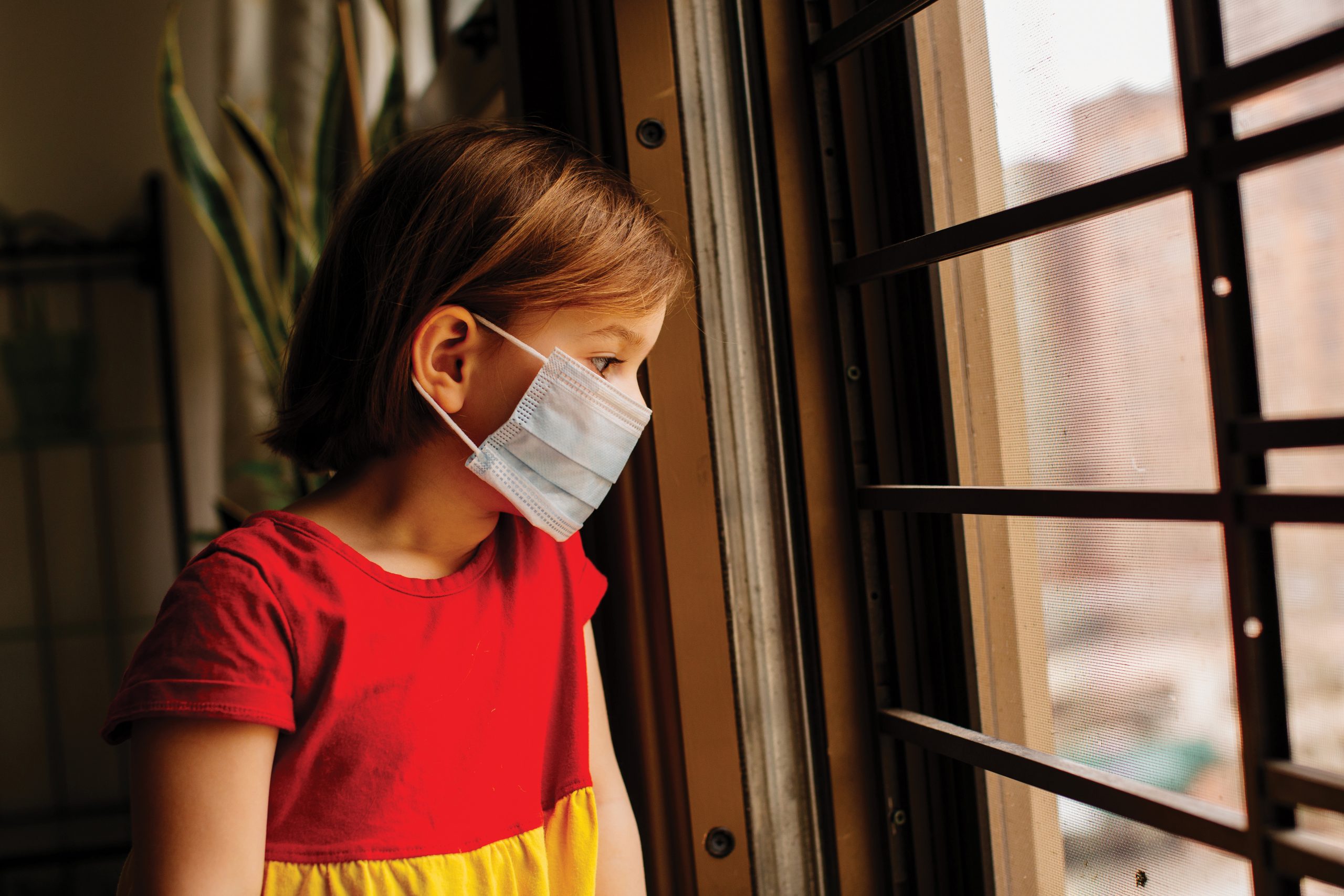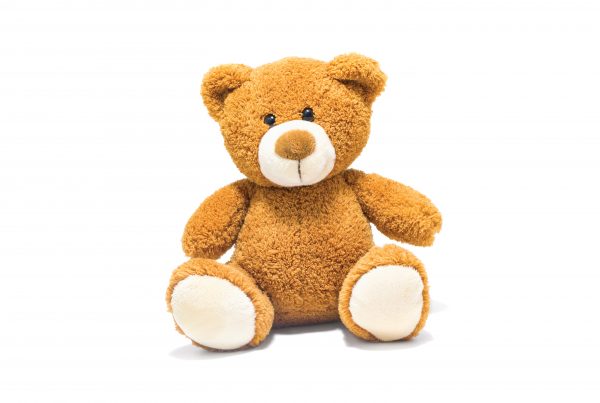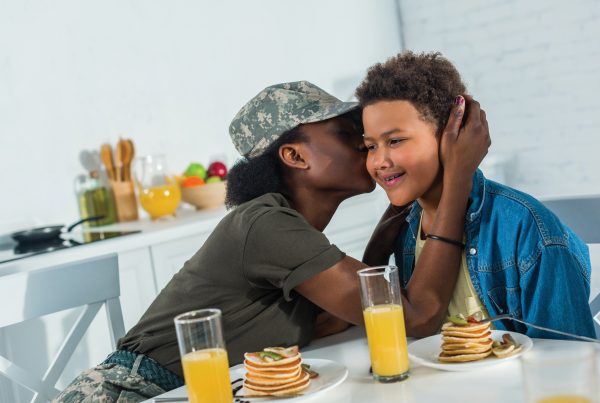“They aren’t just numbers. They are people that died.” Madeleine, age 13, Founder of the COVID Quilt
Children and teens have had their world turned inside out during the coronavirus pandemic.
The familiar has turned foreign, the expected has vanished, and the world as kids knew it pre-COVID-19 has been transformed into a surreal new normal. Overwhelmed by virtual classes, home quarantine, cleanliness and health pressures, isolation from friends and school, financial insecurity, racial unrest, political chaos, and COVID-19 illness and death, young people are confronted with enormous challenges impacting their life.
Grief is not linear for toddlers or teens. It can hit children at unpredictable times when least expected – a classroom zoom lesson, watching a movie, or reading a book. The following are common signs of grieving children: (Goldman, 2017. Pp. 24-25)
- Child retells events of the deceased’s death and funeral (or lack of funeral).
- Child dreams of the deceased.
- Child idolizes or imitates behaviors of the deceased.
- Child feels the deceased is with them.
- Child speaks of loved one in the present.
- Child wants to “appear normal.”
- Child enjoys wearing or holding something of the loved ones.
- Child rejects old friends and seeks new friends with a similar loss.
- Child asks to call home during the school day (if they are back in a socially distanced way).
- Child cannot concentrate on schoolwork.
- Child bursts into tears without warning.
- Child seeks medical information on death.
- Child worries excessively about their health, or health of others.
- Child sometimes appears to be unfeeling about loss.
- Child begins “attention seeking” behaviors.
- Child is overly concerned with caretaking
COVID-19 Illness and Death Challenges
Children and families are experiencing unprecedented challenges during the coronavirus. The difficulties caused by social distancing prohibits kids from visiting loved ones in the hospital, hugging them, or saying goodbye in person. FaceTime, phone chats, and Zoom meetings have become virtual antidotes. Yet, not having personal hospital visits can be a great loss, provoking anxiety and disturbing imaginings of what is happening to a loved one.
Creating an open-ended dialogue with children about illness or death begins with adults finding age-appropriate language to use. Death can be defined for children “as when the body stops working. Usually, people die when they are very, very, old, or very, very, sick, or their bodies are so injured that doctors and nurses cannot make their bodywork again.” (Goldman, 2017, p. 20)
Learning from the COVID Virus
Kids are resilient. They want to feel OK and normal, even during these unfamiliar, challenging times. Although some may think only old people die, others suggest that the virus is fake news, still more see no end to the virus, wondering “Will my Mommy die? Can I die too?” Many children have personally experienced a COVID illness or death. We must encourage the belief this is period is temporary, and support skills of accommodation and flexibility.
Learning the importance of hygiene can prove beneficial throughout a child’s life. Washing hands before eating, wearing a mask to stop contagion, and maintaining social distancing require their discipline to stay healthy. A positive outlook can emerge. Kids can adopt an attitude of acceptance in living with the virus and still being creative, happy, and seeing a future without the coronavirus.
We can help youngsters grieve losses during the pandemic by creating a safe oasis for expression, mentoring positive attitudes, and supporting creative ideas with the following suggestions.
- Recognize and validate kids’ losses during the pandemic. Each loss is important and needs to be understood. No soccer, no lunch at school, and no real-time with teachers can be enormously stressful. Perceived loss of safety and health can create anxiety and worry about their future health and happiness.
- Be aware of the accommodation a child is experiencing during COVID19 such as no classroom to work in, mask-wearing, social distancing, confinement to home, and new health standards such as hand washing to prevent the virus. Affirm it is difficult.
- Be available and ready to discuss the virus with kids. Children share when they are ready. Adults must be present and prepared for those conversations. “Covid-19 is a small invisible virus that can make people sick.”
- Understand behaviors when kids cannot verbalize feelings, ranging from anger about not seeing friends, sadness from isolation, frustration with schoolwork, and fear about health. Feelings might be projected onto others or expressed through sudden outbursts of feeling.
- Limit media exposure. Use the news as a teachable moment with children. Present facts, resources, correct misinformation, and limit exposure.
- Become a role model. Create positive discussions about professionals who are working hard to develop a vaccine, stop the virus spread, and keep everyone healthy.
- Maintain the daily routine. It is important to maintain routines such as bedtime and brushing teeth that support normalcy in the midst of upheaval and change. Continue chores like making the bed or drying the dishes. Include a daily hygiene program for washing hands, social distancing, and mask-wearing. Maintain expectations for homework and good grades.
- Support connections. Encourage continuing friendships through technology. Help kids with digital lessons online.
- Create new structure through family activities. Families can join together to create healthy meals, take walks, and play games.
- Show affection. Families may be living in isolation, but they do have each other. Hugs and physical contact are important during the day. One mom asks her children daily, “How is your heart?”
- Honor children’s questions. Every child is important and so is their grief. Follow the child’s lead by letting them tell you where they are in their grief process, listening, and responding to questions. Often these questions are windows into hidden feelings and thoughts.
- Create a resource library about COVID-19 to facilitate discussion.
Black, Heather (2020) Why Did the Whole World Stop? Talking with Kids About Covid-19, Cheung, Catherine. (2020) Covid-19 for Kids: Understand the Coronavirus Disease and How to Stay Healthy, Luckey, Lindsey (2020) What is Social Distancing? A Children’s Guide & Activity Book, Morgan, Rob (2020) Madi Goes to Virtual School, Ross, Nicole (2020) Virtual First Day, and Saunders, Rachel (2020) Going Back to School During Coronavirus.
Conclusion
The COVID-19 virus has assuredly created new stresses, anxieties, and challenges surrounding grief and loss for kids. In many cases this virus and its subsequent quarantine has generated feelings of isolation, loneliness, and social limitations which inhibit the grief process in the “ordinary” way. Girls and boys are living in “extraordinary” times and navigating unchartered territories. Yet the silver lining for many children in this COVID-19 era is their surprising ability to persevere during challenges, learn new coping mechanisms, and problem solve in ways previously unimaginable.
The resilience displayed by our youth far outweighs their limitations. A new generation of youngsters has arisen, many strengthened by their accommodation to the coronavirus. They are mastering effective health procedures while growing compassion for their underserved peers. As their guides, mentors, and loving presence, caring adults can support children in this newfound way of living – reminding them they are loved and respected for their ability to cope during difficult times.
“We are powerless to control the losses and catastrophic events our children may need to experience, but by honoring their inner wisdom, providing mentorship, and creating safe havens for expression, we can empower them to become more capable, more caring human beings.”
(Goldman, Children Also Grieve, 2020)
References:
Callahan, Chrissy. September 25, 2020. Teen creates COVID-19 quilt to honor those who have died. Today. Retrieved at https://www.today.com/health/madeleine-fugate-made-quilt-honor-those-who-died-covid-19-t192406
Goldman, Linda. 2021. Life and Loss: A Guide to Helping Grieving Children, Classic Edition. NY: Taylor and Francis.
Goldman, Linda. 2017. Creating Inclusion and Well-being for Marginalized Students: Whole-School Approaches to Supporting Children’s Grief, Loss, and Trauma. London: Jessica Kingsley.
Goldman, Linda. 2021-in press. Climate Change and Youth: Turning Anxiety into Activism. NY: Routledge.
Goldman, Linda. 2009. Great Answers to Children’s Questions About Death: What Children Need to Know. London: Jessica Kingsley.
Goldman, Linda. 2020. Children Also Grieve. P. 72. MD, Goldman.
Karst, Patrice. 2001. The Invisible String. CA: Devorss and Co.
Miller, Jenny. October 14, 2020. 13-year-old created ’COVID memorial quilt’ to pay tribute to lives lost in the pandemic. Yahoo. Retrieved at https://news.yahoo.com/covid-memorial-quilt-pay-tribute-lives-lost-pandemic-193830369.html
Mills, J. 2004. Gentle Willow: A Story for Children about Dying. DC: Magination Press.
Sesame Street. 2020. Caring for Each Other: Community Resources. Retrieved at sesamestreet.org/caring,
Sesame Street. 2020. Helping Children Grieve. Retrieved at http://www.sesamestreet.org/caring
Wadsworth, B. 2003. Piaget’s Theory of Cognitive and Affective Development: Foundation of Constructivism, 5th Edition. NY: Pearson.






